Your cart is currently empty!
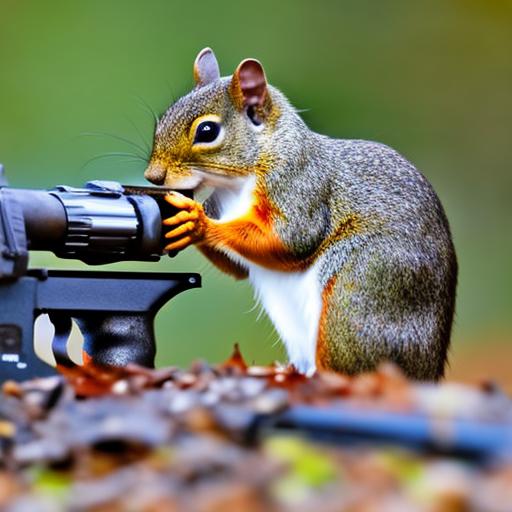
Can You Kill a Squirrel with a .177 Pellet Gun?

Table of Contents
Introduction
For many hunters, the thrill of small game hunting lies in the challenge. Squirrels, with their agile movements and sharp senses, make for particularly exciting prey. But what’s the best tool for the job? A common question that I often hear, especially from those new to the world of small game hunting, is “can you kill a squirrel with a .177 pellet gun?” The short answer is yes, but with some caveats. The .177 pellet gun, though lightweight and easily maneuverable, requires precision and understanding to be used effectively against squirrels. As someone who has spent a significant amount of time hunting and trapping these nimble creatures, I’ve come to appreciate the balance of skill, patience, and equipment knowledge needed. In this article, we’ll delve into the anatomy of the .177 pellet gun, the ethical considerations you must bear in mind, and tips to improve your chances of a successful and humane hunt.
The Anatomy of a .177 Pellet Gun
One of the most commonly asked questions about small game hunting, especially for those keen on pursuing squirrels, revolves around equipment. Central to this is understanding the tools at your disposal. Enter the .177 pellet gun. Knowing the anatomy of this firearm is essential for both beginners and seasoned hunters alike, as it can drastically influence the outcome of a hunt.
At its core, the .177 pellet gun is an air gun, which means it uses compressed air or CO2 to propel pellets. This differs significantly from traditional firearms that use a powder charge. The absence of a loud report and reduced recoil are some advantages of air guns, making them especially attractive for backyard pest control and discrete hunting scenarios.

Now, not all air guns are created equal. The caliber, or the diameter of the bore, is a distinguishing factor. While there are various calibers available in the market, the .177 stands out as the most popular for target shooting due to its flat trajectory over short distances. However, its capability in hunting scenarios, especially with squirrels, often comes into question. This is where pellet choice becomes crucial.
Pellet Types and Their Impact on Hunting
The kind of pellet you use in a .177 caliber gun can make a world of difference when hunting. Remember, an effective shot isn’t just about hitting the target; it’s about delivering a quick, humane kill.
- Pointed Pellets: As the name suggests, these have a sharp tip. Their design is aimed at providing deeper penetration upon impact. While they can be effective, they might not always guarantee a humane kill unless placed precisely.
- Domed Pellets: Often considered the go-to choice for many hunters, domed pellets, also known as round-nose pellets, offer a good balance between penetration and impact. Their aerodynamic shape also makes them particularly effective over longer distances, ensuring better accuracy.
- Hollow-Point Pellets: These are designed to expand upon impact. When hunting small game like squirrels, a well-placed shot with a hollow-point pellet can ensure a quick kill due to the pellet’s rapid energy transfer. However, their effectiveness diminishes over longer distances.
When answering the question, “can you kill a squirrel with a .177 pellet gun?”, pellet choice is paramount. While the gun itself plays a role, the type of ammunition can significantly influence the outcome. As with any hunting tool, understanding your equipment and practicing regularly can improve your chances of success. Moreover, always prioritize ethical hunting practices, ensuring your shots are precise to avoid unnecessary suffering for the animal.
Ethical Considerations in Squirrel Hunting with a .177 Pellet Gun
Squirrel hunting, while offering its own set of challenges and rewards, brings with it a responsibility to ensure ethical treatment of the game. This is not only a matter of personal honor and respect for wildlife but also ensures the sustainability and balance of our ecosystems. Using a .177 pellet gun for squirrel hunting requires even more deliberation and knowledge due to its specific limitations and capabilities.
The Imperative of a Humane Kill
First and foremost, the idea behind any hunting expedition is to ensure a quick and humane kill. This is not merely for the sake of the animal but also plays a vital role in the quality of the meat, should you be hunting for consumption. A stressed or wounded animal can produce adrenaline, affecting the taste and tenderness of the meat. For those of us using a .177 pellet gun, this becomes particularly pertinent. Given its caliber and power, the margin for error is considerably smaller, making the hunter’s skills and understanding vital.
Understanding Shot Placement
With a .177 pellet gun, precision is key. Every experienced hunter knows that the placement of the shot is paramount in determining the outcome of the hunt.

- Head Shots: Aiming for the head, particularly the brain, ensures an instant and humane kill. Given the small size of a squirrel, this requires utmost accuracy. A properly placed head shot minimizes suffering and guarantees that the animal doesn’t escape wounded.
- Heart/Lung Shots: While this is a larger target area than the head, it’s equally vital. A well-placed pellet in this region disrupts vital organs, leading to a rapid death. However, the challenge here is the potential movement of the squirrel and the smaller size of the pellet, which might not always deliver an instantaneous kill.
Consequences of a Misplaced Shot
The reality of hunting is that not every shot goes as planned. With a .177 pellet gun, the risks associated with a misplaced shot are even more pronounced. A wounded squirrel can escape, leading to prolonged suffering. Moreover, a hurt animal can become unpredictable, posing potential risks to other animals or even the hunter.
Beyond the immediate danger and ethical concerns, tracking a wounded squirrel is a challenging task. These creatures are agile and can easily disappear into thickets or tree hollows, making it nearly impossible to locate and ensure a humane end.
Tips and Techniques for Effective Squirrel Hunting with a .177 Pellet Gun
When embarking on a squirrel hunting adventure with a .177 pellet gun, understanding the finer details can significantly improve your success rate. From knowing the ideal conditions to ensuring your equipment is in top shape, every detail counts. Let’s delve into some seasoned tips and techniques to elevate your squirrel hunting experience with this particular firearm.
Best Times, Habitats, and Seasons for Squirrel Hunting
Squirrels are active creatures, but they do have patterns that, once understood, can increase your chances of spotting and hunting them.
- Time of Day: Early morning and late afternoon are peak times for squirrels as they forage for food. This period, just after sunrise and a couple of hours before sunset, often sees them in their most active state.
- Habitats: Dense woodlands with an abundance of oak, hickory, or walnut trees are squirrel havens. These areas provide them with a steady food source and ample cover.
- Seasons: While squirrels can be hunted in various seasons, fall is especially productive. As they prepare for winter, their foraging activity increases, making them more visible and accessible.
Stalking and Setting Up: The Art of Patience
Hunting squirrels requires a mix of stealth and patience.
- Positioning: Find a spot with a good vantage point near active squirrel paths or food sources. Being elevated, like sitting against a tree trunk or in a hide, can offer better visibility.
- Waiting: Once positioned, it’s a waiting game. Squirrels are keen observers, and any sudden movement can alert them. Stay still, be patient, and wait for the right moment.
- Patience: Remember, hunting is as much about the experience as it is about the catch. Enjoy the tranquility of nature and let the hunt unfold naturally.

Maintaining Your .177 Pellet Gun for Optimal Performance
A well-maintained gun is a reliable gun.
- Regular Cleaning: After every hunting trip, ensure you clean your pellet gun. Remove any debris, clean the barrel, and check for any signs of wear.
- Pellet Quality: Always use high-quality pellets. Cheap or damaged pellets can affect your gun’s accuracy and performance.
- Store Properly: When not in use, store your pellet gun in a dry place, away from extreme temperatures.
Safety First: Using Pellet Guns Responsibly
While pellet guns might seem less intimidating than larger firearms, they demand equal respect.
- Always Treat It As Loaded: Even if you’re sure it’s not, always handle the gun as if it is loaded.
- Mind the Muzzle: Ensure the gun’s muzzle always points in a safe direction.
- Safety Gear: Wear protective eyewear and, if necessary, ear protection. While .177 pellet guns are quieter, it’s always best to prioritize safety.
Incorporating these tips and techniques into your squirrel hunting routine can make your outings with a .177 pellet gun more effective and enjoyable. Remember, it’s a combination of knowledge, preparation, and respect for the game that leads to a successful hunt.
Related Questions
Is a .177 pellet gun suitable for other small game?
Absolutely, the .177 pellet gun isn’t just confined to squirrel hunting. It can also be effective for hunting other small game like rabbits or birds, especially at close to medium ranges. However, as with squirrels, the key lies in shot placement. For rabbits, a well-placed headshot is crucial for a humane kill. For birds, depending on the size and species, the .177 can be useful, but one must ensure it’s used within appropriate distances to ensure effectiveness and ethics are maintained.
What are the alternatives to a .177 pellet gun for squirrel hunting?
There are several alternatives to consider when squirrel hunting. The .22 caliber rifle, for instance, offers more stopping power and is a favorite among many small game hunters. Shotguns, loaded with light birdshot, can also be used, especially when squirrels are moving quickly through trees. Other air guns, like the .22 or .25 caliber pellet guns, bring more punch and can be preferred, especially for hunters looking for a bit more power while maintaining the quiet operation of an air gun.
How can you improve accuracy with a .177 pellet gun?
Improving accuracy with a .177 pellet gun comes down to a mix of equipment familiarity and practice. Consider upgrading or adjusting your sights, with many opting for quality scopes to aid in precision. Regular practice is a must—spend time at a range or safe shooting area to understand your gun’s ballistics, especially how the pellet drops over distance. And don’t forget to study your pellet gun’s manual or specifications; understanding its mechanics and potential quirks can be instrumental in enhancing accuracy.
Summary
In our journey to answer the question “can you kill a squirrel with a .177 pellet gun?”, we’ve explored the nuances of the tool, the responsibilities of the hunter, and the nature of the game. It’s evident that while the .177 pellet gun can indeed be an effective weapon against squirrels, its success largely hinges on the user’s expertise and commitment to ethical hunting practices. The world of squirrel hunting is vast and varied, and the .177 pellet gun is just one of the many tools at a hunter’s disposal. But as with all hunting endeavors, knowledge, respect for the animal, and constant skill refinement are paramount. Whether you’re a seasoned hunter or just starting out, always remember to prioritize safety, hone your skills, and stay updated on local regulations. Here’s to many successful and ethical hunts ahead!

Herb has been a longtime lover of the outdoors. Whether it be hunting, camping, fishing or just getting outside to reset. Proud father and animal lover. Bourbon anyone?

by
Tags:
Comments

Categories
- Big Game Hunting (301)
- Deer (202)
- Reviews (3)
- Shooting (16)
- Slingshot (1)
- Small Game Hunting (42)
- Upland Hunting (126)
- Waterfowl Hunting (3)

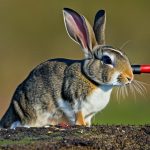
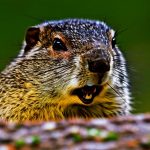
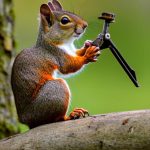
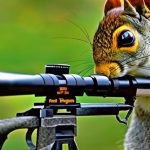
Leave a Reply